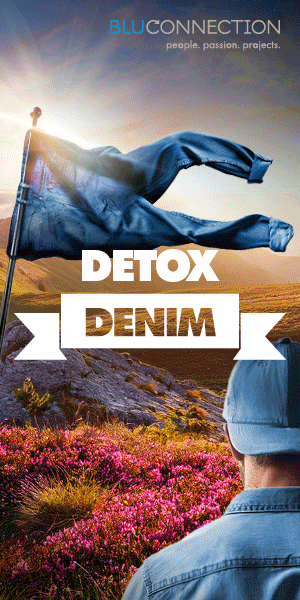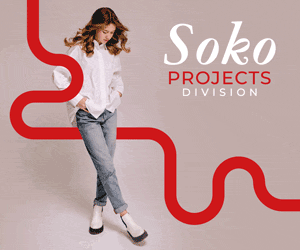The quest for common metrics

The need to back sustainable practices with bona fide third-party certification has led to the development of countless labels and standards serving the varied environmental, social and governance (ESG) policies of brands and retailers. After some twenty years, the business of certification has reached a state of maturity, verging on saturation, that signals it is time for an overhaul.
In looking to assure their stakeholders, employees, customers and shareholders that they are applying the best possible practices, companies have many options to choose from, but no universal, institutional, fully independent or globally recognised standard. The business of certification is the field of private, diversely funded organisations.
In the course of what is commonly called a “sustainability journey”, brands typically begin by taking steps to certify the origin of their raw materials, be it organic, recycled or regeneratively grown cotton. Alternatively, they may want to promote social or specific community issues. For other fibres, the notion of animal welfare or biodiversity and deforestation may count. Whatever it is, there are countless causes that a company may wish to show support for through its approach to certification.
Continuing down this path, what happens when a brand decides to blend different types of cotton or add in a measure of recycled polyester (rPET) to strengthen a recycled cotton denim fabric? No single label adequately certifies the environmental impacts of farming and of plastic recycling practices. It is possible of course to put two authentication marks on a product’s tag or label. But what about the brand that also promises to ensure fair pay for factory workers? Or the company that believes biodiversity is of critical concern? How many labels and seals can consumers, if they are the intended audience, absorb before reaching a point when the message gets lost, and certifications fail to do their job of providing confidence?
This, in a nutshell, is the quandary that certification organisations and their customers face. Calls to cover an ever-wider range of social, ecological and economic codes also fuel the modern ailment of audit fatigue, and its escalating costs. Two organisations are tackling the problem, each from its own specific standpoint. The Delta Project was created to clear some of the unnecessary clutter within sustainable cotton standards and Textile Exchange is in the process of reviewing its many siloed standards.
The life cycle of a standard
The Textile Exchange, based in the US, has addressed the evolving needs of brands by developing new standards, now offering an array spanning its Organic Content Standard and Global Recycled Standard to a series of Responsible Down, Wool, Mohair and Alpaca Standards. To its current portfolio of eight labels, it added a new, overarching Climate+ platform that aspires to monitor another series of impact areas now deemed essential, which include greenhouse gas emissions, soil health or biodiversity, to name but a few.
In a move to merge these two levels of certification, Textile Exchange is working on overhauling its hierarchy of labels to create a ‘unified standards system’, the working title for this plan, signalling a new phase in the lifecycle of standards.
“We recognise that our eight different standards each have different interests and challenges. It would be beneficial for us and for our stakeholders to bring them under a single unified umbrella and to tie them in with the Climate+ impact areas,” says Laura Kohler, Textile Exchange’s standards manager, speaking at a webinar on the development of the new unified system.
The first stage of the harmonisation project was launched in 2021 to identify the unified standard’s scope and indicators. It is expected that a first draft of the unified standard will be published in early 2023 and open to stakeholder consultation at that time, followed by a second draft and consultation in the summer of 2023, says Ms Kohler.
Alongside the revised and harmonised labels, Textile Exchange plans to roll-out a brand-new unified logo system. “The labels we have today lack harmony, we are working on developing a new graphic system that we hope will be simpler and easier to use. The unified standard presents an opportunity to start fresh,” says Stefanie Pokorski, standards claims manager, speaking at the same Textile Exchange webinar. The organisation is aware of its current labels’ restrictions: that they are difficult to apply when a product is certified to multiple standards and that they lack wide market recognition.
In addition to these ambitious plans, Textile Exchange is also considering adding new product categories to its roster such as manmade cellulosic fibres, biosynthetics and ‘in conversion’ cotton. But Ms Kohler points out that the organisation does not intend “to duplicate existing standards or add another level of audit.”
Units and datasets
A similar type of overhaul is at work among cotton certification systems with the Delta Framework, a project funded by the Swiss State Secretariat for Economic Affairs through the ISEAL Innovation Fund, which is led by Better Cotton, partnering with seven other sustainable cotton standards, programmes and codes. Together, they have taken the name Cotton 2040 Group. “The goal is not to create a new standard, but to align the way we measure and report our sustainability progress on our common impact areas,” says Eliane Augareils, senior monitoring and evaluating manager for Better Cotton.
While the organisations committing to use the Delta Framework do not have the same scope or type of interventions, they do share some common impact goals and they all need to monitor progress toward these goals. For instance, reducing the water footprint is a key priority of the cotton sector, but monitoring irrigation water use is done very differently by each organisation.
“Some programmes report volumes, others use reduction percentages over time, still others compare water use between their certified farmers and a comparison group,” says Ms Augareils. “These diverse approaches are usually not comparable and the results cannot be aggregated into common reporting to promote the progress made by sustainable cotton initiatives overall.”
Going one step further, the Delta Framework includes a digitisation guidance to allow the creation of a compatible data management system across several platforms. This titanic task involves deciding on which unit of land surface is retained, whether time frames are based on calendar or seasonal years, and even the number of decimal points for a given data point. “This will make it technically possible to consolidate and analyse data across all standards involved,” says Ms Augareils.
“The Delta Project is finished, but the framework will need to be revised regularly in order to remain relevant, adapting the indicators to future sustainability priorities, and to integrate new tools and technologies, such as satellite imagery, when they become available,” she says.
Keeping up to date
The evolution of technology in the past twenty years is shaping how standards work and driving demand for interoperable datasets. This point was raised by Fashion Revolution in its Fashion Transparency report for 2021. “Once again, we are explicitly looking for machine readable lists in alignment with the Open Data Standard for the Apparel Sector to drive convergence on how data is shared. This is critical in helping remediate issues more quickly. In 2020, just 10% out of 250 brands disclosed their supplier lists in a machine-readable format and now 31% of 250 do so, showing increased convergence and alignment with best practice disclosure,” it states.
As mentioned, standards themselves have a life cycle. “Standards change all the time,” Vincent Duret, textile business unit manager for France-based Ecocert tells Inside Denim. “We are currently at Textile Exchange’s v4, GOTS is at v7.” They need to adjust not only to an evolution in the hierarchy of criteria but also to an evolution in technology. He mentions the current update applied to the Global Recycling Standard (GRS) which will require brands that wish to use the label themselves to be certified. In the past, they could simply buy a “certified” product and sell it as such. “These new conditions help level the playing field,” he says.
For products of agriculture, the development of generic globalised standards is a subject of intense debate. The goal of the Delta Project was not to create an overarching cotton standard applicable to all types of farming and business practices, but to clean up the back office of certification. Admittedly, a handful of major organisations participated in this mission, but it does not cover, by any measure, all types of sustainably grown and certified cotton fibres. So while both initiatives profess to close some of the gaps in the business of certification, many others may still be left gaping.
With support from India-based Delight Group, the principles of Good Earth Cotton, born in Australia and promoted as a climate positive, traceable cotton, will be applied by 1,977 Indian cotton farms, spanning 3,689 hectares of land. This programme represents a first of its kind, according to Good Earth Cotton, which intends to capture primary and site specific scientific data at scale and verified across participating growers.
Photo: David Hutton













